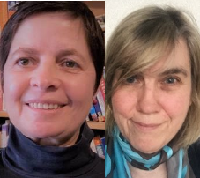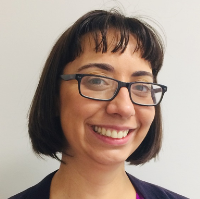Blog
Unless otherwise stated, content is shared under CC-BY-NC Licence
From Photostat to Overhead Scanning Machines: Serving Academia, the International Community and Civil Society
Adriana Kolar, Ph.D., Archives Management Senior Analyst and Gudrun Beger, Ph.D, Archives Management Senior Analyst are both members of the ‘Total Digital Access to the League of Nations Archives (LONTAD) Project’.
Information Technology has taken a quantum leap since 1938, when Dr. Pieter Sevensma, Director of the League of Nations Library, ordered Photostat machines for the new premises of the organization, at the Palais des Nations in Geneva. Photostat machines were devices that made photographic copies of manuscripts, maps and documents. At the time, this system was not only state-of-the-art for making facsimiles but also for storing information on a medium other than paper, i.e., on film rolls.
Do researchers know what Digital Preservation is?
Gareth Cole is Research Data Manager at Loughborough University.
I feel I can pretty confidently say the answer is no. But, things may be changing.
As with many universities worldwide, at Loughborough we are working with our academic community to increasingly make their research data publicly available. This is not without its challenges. Some researchers deposit data because they want to make it openly available, some deposit because they are under a funder or publisher obligation, and some don’t deposit! The range of motivations means that a one size fits all approach isn’t appropriate. However, we have to balance this with our limited staffing resource as there is only so much we can do.
A remote year at the ADS
Tim Evans is Deputy Director at the Archaeology Data Service.
As I would imagine is the case with the vast majority of people, it's been an unusual year at the Archaeology Data Service. Since moving into lockdown 12 months ago most members of staff have been working remotely, connected only by the ubiquitous Zoom meetings. With Spring in the air, and things just showing signs of returning to normal here in the UK it's inevitably a time for reflection.
Connected
A year ago today the DPC team gathered online and took the decision to close our offices and work from home. We've been working from home ever since. Let me be more precise: the phrase we used was 'at home in a time of emergency doing whatever work was practicable'. That's an important difference and underlines the point which will follow.
Of self-assessments and certifications: The International Residual Mechanism for Criminal Tribunals (Mechanism) journey so far
Angeline Takawira-Magaya is a Digital Archivist at the United Nations International Residual Mechanism for Criminal Tribunals.
Trustworthiness is a goal for every digital repository and organizations are increasingly interested in demonstrating it by obtaining certification as a trustworthy digital repository (TDR). However, pursuing certification requires a significant investment of time and effort so it must be a well-considered decision. The anticipated benefits for the organization and its stakeholders must be articulated clearly, and weighed against the likely costs involved, to determine whether the TDR certification is essential, desirable or just “nice to have”.
FAIR Forever: A FAIR study to remember
Last December, the DPC completed a study on EOSC, FAIR, and digital preservation, ‘FAIR Forever? Long Term Data Preservation Roles and Responsibilities’, commissioned by the EOSC Sustainability Working Group and funded by the EOSC Secretariat Project in 2020. In this blog post, I will share some of our key findings and recommendations from the study with two special announcements!
Reflections on the preservation of STATA data sets
Gareth Knight is Research Data Manager in the Library & Archives Service at the London School of Hygiene & Tropical Medicine.
Health research often involves the collection and processing of data from human participants. This data often must be made available to others for the purpose of validation and further development, which makes it essential that it remains usable over time. In this blog post, I will outline some of the steps that may be taken to curate quantitative data held in STATA format.
This topic has previously been explored in a fantastic DPC blog post by Jenny O'Neill in 2017 (https://www.dpconline.org/blog/quanititative-file-formats-for-preservation), however, I will be putting an institutional spin on the topic.
Health context
The London School of Hygiene & Tropical Medicine (LSHTM) is a public research university that specialises in the field of public health and tropical medicine. Between 2012-2015, it undertook a Wellcome Trust project to enhance data management practice among researchers. The strong focus upon health research and relatively small size of the institution made it possible to provide researcher support that would not be feasible at a larger scale. As a result, the Library & Archives Service was able to work closely with research projects to help them to address their data preservation and sharing requirements.
What’s Up, (with Google) Docs? – The Challenge of Native Cloud Formats
Paul Young is Digital Preservation Specialist/Researcher at The National Archives UK
The Challenge
The National Archives has recently been looking at the issue of transferring material from departments with Google Workspace Environments (previously GSuite). The rise in cloud document management has brought new challenges which require changes to existing processes and methods.
One of the biggest issues is dealing with the Google native cloud formats produced by the suite of collaborative Google tools, such as docs, slides and sheets. These require different methods of handling, as they exist as data that is rendered within the browser, rather than as distinct files. The original format cannot be exported and rendered as you would a Word Document or PDF file.
Aberystwyth University - Recent Student Research in Digital Preservation
Sarah Higgins is a Lecturer and the Department Director of Recruitment & Admissions at the Department of Information Studies at Aberystwyth University
Today is Dydd Gŵyl Dewi Sant or Saint David’s Day in Wales – a national celebration to mark the death in 589 A.D. of our patron saint. It also marks exactly 11 years since my family, and I, left my native Scotland to make Wales our home. A journey of discovery both personally and professionally, I quickly felt at home in our village, Aberystwyth University’s Department of Information Studies and the wider information professional community in Wales.
One of my remits since joining the Department has been to develop and deliver education in digital information management, and in particular digital preservation. This has been a challenging and satisfying role, involving the development and delivery of assessed modules and full degree schemes at both undergraduate and master’s level, while embedding digital preservation into the curriculum across all our accredited courses (CILIP and/or ARA)[i]
However, one of the most rewarding aspects of the role is supervising student research projects on digital preservation themes. In undertaking their master’s dissertations and research degrees the students choose their own topics based on interests developed during their studies and are guided by supervisors to develop robust research aims and objectives, collect new data and make unique conclusions to further the discipline. The students bring imagination, energy, and new ways of exploring old problems to their projects, and on this day of national celebration, it would seem fitting to highlight some recently completed and ongoing digital preservation research, at Wales’s oldest university, to the international community.
Three students have concentrated on issues surrounding national record-keeping in the context of international developments in technology and digital preservation.
Ingest scheduling for DAMS at LSE: blending technical and curatorial input
Fabiana Barticioti is Digital Assets Manager at LSE Library
LSE Library has just completed an assessment of the significance of our major legacy digitised collections to help inform our Preservation Programme. The outcome is a focused and short list of collections deemed to be suitable for long-term preservation. The decision process had some technical aspects, but the exercise was mostly curatorial.
LSE Library started its digital preservation journey back in 2009. Initial development gravitated towards the application of open-source software with a priority on providing open access to collections to the wider community. The initial ambition covered digitised collections, born-digital material and research outputs from the LSE community.



















































































































































